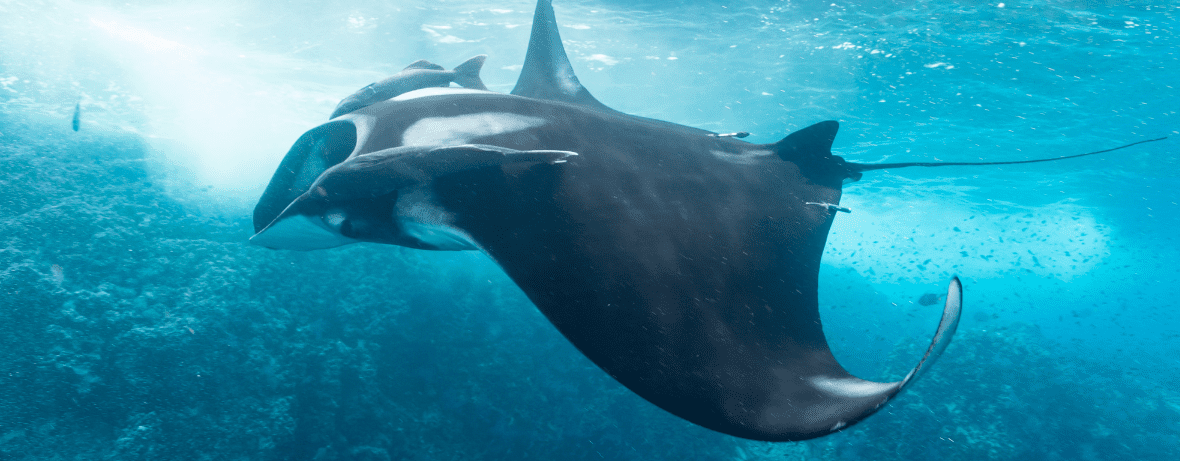
These marine behemoths have many names such as the giant manta ray, oceanic manta ray, and even devil ray — due to their protruding cephalic fins on either side of their mouths. In reality, though, these creatures are far from devilish, often seeking out human interaction with friendly divers.
Oceanic manta rays are the world′s largest rays and can grow a wingspan of up to 7.9 meters (26 feet) and can weigh over 2,267 kilograms (5,000 lbs).
These oceanic explorers can be found in tropical and temperate waters around the world, exploring both shallow coastal waters, and depths of up to 1,000 meters (3,280 feet).
These striking rays typically have dark-colored backs — black, dark grey, or blue — contrasting sharply with their bright white underbellies. Oceanic manta rays often display unique spot patterns clustered around the lower abdominal region, which, like fingerprints, can be used to identify individual rays.
Despite having teeth, manta rays don′t actually use them while feeding! Instead, Oceanic manta rays are filter feeders, which means they obtain food by taking in surrounding water through their large mouths and ″filtering″ out food particles and organisms. These rays primarily eat large quantities of zooplankton, but have also been observed eating copepods, mysids, decapod larvae, shrimp, and small to moderately sized fish.